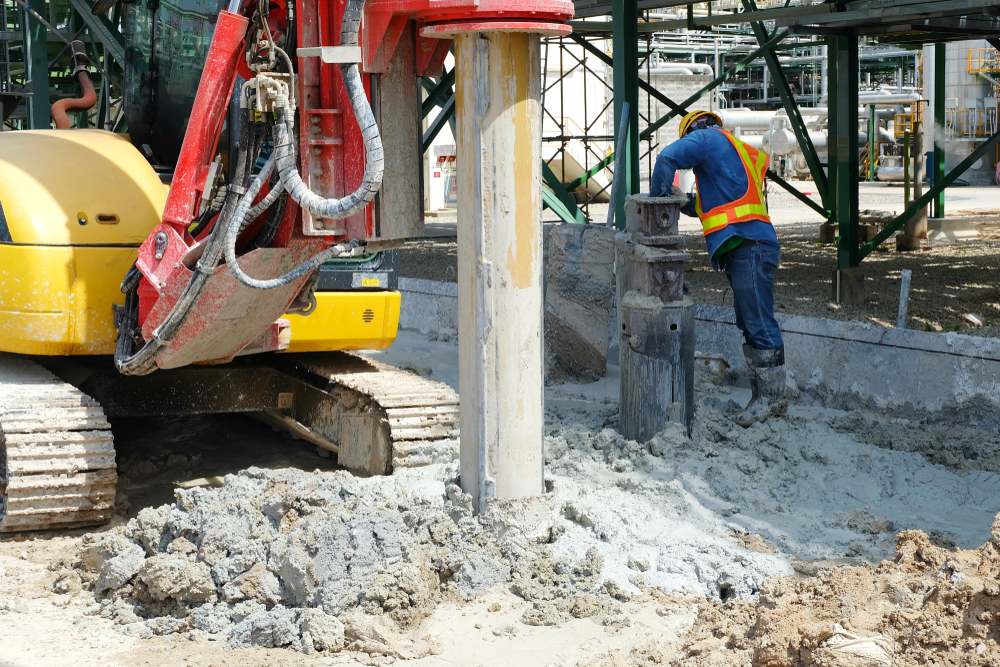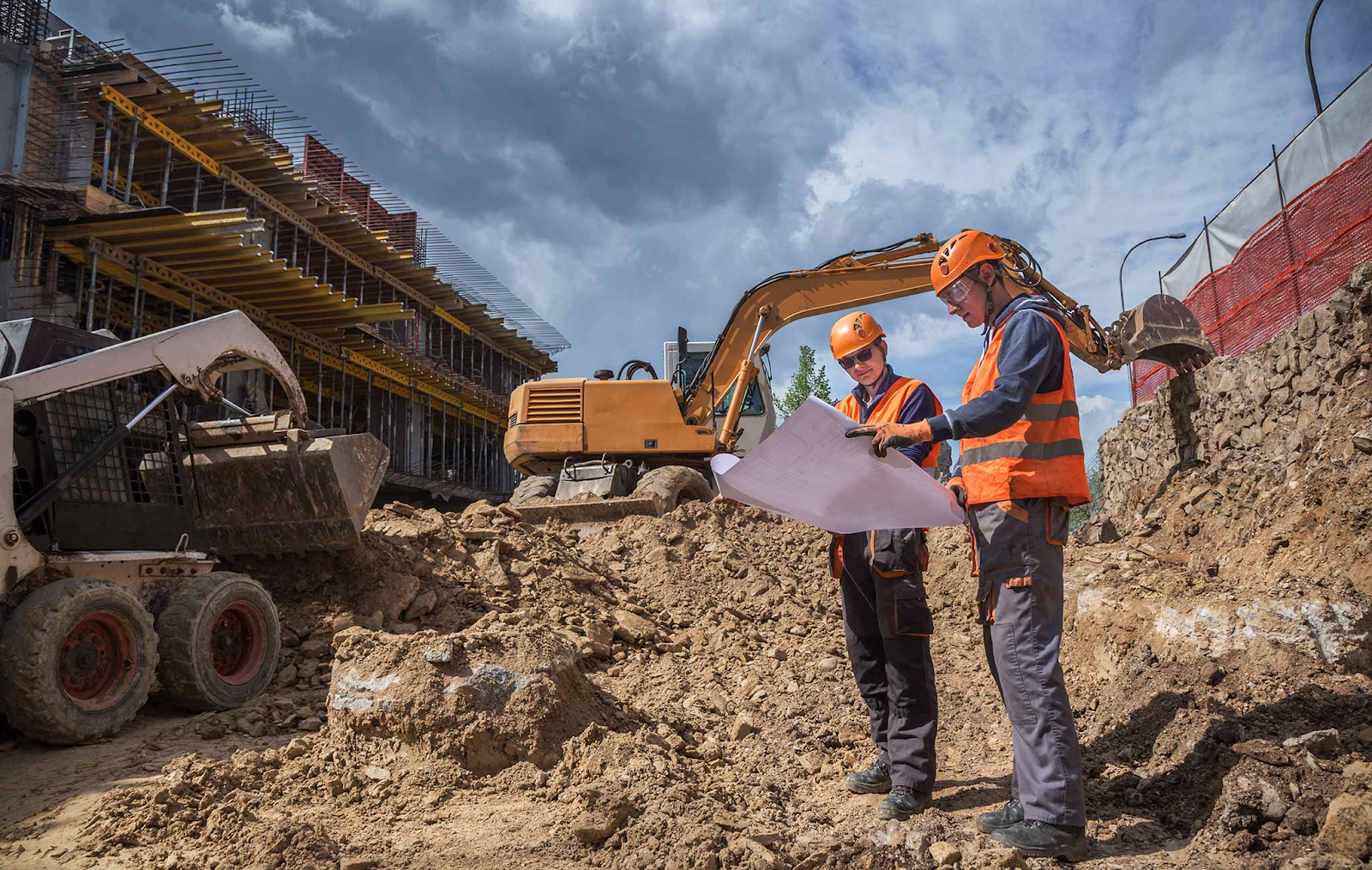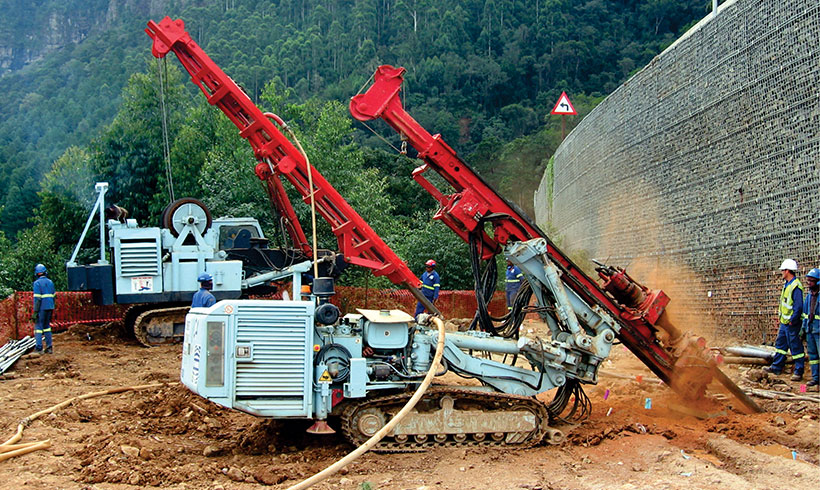Rumored Buzz on Geotechnical Engineering For Construction Projects
Rumored Buzz on Geotechnical Engineering For Construction Projects
Blog Article
The 7-Minute Rule for Geotechnical Engineering For Construction Projects
Table of ContentsGet This Report about Geotechnical Engineering For Construction ProjectsWhat Does Geotechnical Engineering For Construction Projects Do?Geotechnical Engineering For Construction Projects Can Be Fun For EveryoneIndicators on Geotechnical Engineering For Construction Projects You Need To KnowNot known Details About Geotechnical Engineering For Construction Projects Geotechnical Engineering For Construction Projects for Dummies
These functions should be taken a look at by geotechnical designers to anticipate their activities under various situations., making this evaluation needed.A geotechnical designer will certainly analyze dirt to figure out the bearing capacity of the planet and recommend appropriate foundation kinds, such as shallow structures, deep structures like heaps, or specialized options like drifting foundations for soft soils. Understanding the attributes and actions of dirt and rock, along with just how they engage with buildings that have been erected on or within them, is just one of the key descriptions for why geotechnical design is necessary.
Ecological protection is achieved via geotechnical design. Competence in air, water, and soil top quality upkeep is put to use by geotechnical designers to reduce the unfavorable impacts of tasks.
Infrastructure advancement, offshore engineering, passage construction, and deep foundations. Risk-based layout and multidisciplinary groups. These parts will maintain the field evolving and guarantee its ongoing relevance in the years to come. To sum up, geotechnical design is a crucial discipline that maintains the durability and stability of civil infrastructure. Geotechnical designers add to making structure jobs effective all over the globe by understanding the behavior of planet materials and using suitable planning methods.
Not known Facts About Geotechnical Engineering For Construction Projects
By analyzing soil, rock, and subsurface conditions, geotechnical designers offer necessary understandings that aid in the design, building and construction, and upkeep of buildings and framework.

The 10-Second Trick For Geotechnical Engineering For Construction Projects
Lab testing: Determining the residential properties of dirt and rock. A number of top-level building tasks have actually effectively used geotechnical design to ensure their security and safety and security.

As a leader in geotechnical design, BECC Inc. is committed to providing ingenious and efficient solutions that meet the highest possible criteria of high quality and security. For more details on how BECC Inc. can support your following building and construction job, call us today and let us help you improve strong ground.
William Rankine, an engineer and physicist, created a different to Coulomb's earth pressure concept. Albert Atterberg developed the clay uniformity indices that are still made use of today for dirt classification. In 1885, Osborne Reynolds recognized that shearing causes volumetric dilation of thick materials and tightening of loose granular materials. Modern geotechnical design is go to this site stated to have actually begun in 1925 with the magazine of Erdbaumechanik by Karl von Terzaghi, a mechanical designer and rock hound.
Geotechnical Engineering For Construction Projects for Dummies
Terzaghi also established the structure for concepts of bearing ability of foundations, and the concept for forecast of the rate of negotiation of clay layers because of combination. Later on, Maurice Biot totally developed the three-dimensional soil consolidation concept, extending the one-dimensional model previously established by Terzaghi to much more general theories and introducing the collection of standard formulas of Poroelasticity.
Geotechnical engineers examine and identify the residential or commercial properties of subsurface conditions and products.
What Does Geotechnical Engineering For Construction Projects Mean?
, which makes use of a thick-walled split spoon sampler, is the most typical method to gather disturbed samples.

If the user interface between the mass and the base of an incline has an intricate geometry, slope stability analysis is difficult and mathematical remedy approaches are needed. Commonly, the user interface's precise geometry is unknown, and a simplified interface geometry is assumed. Limited slopes need three-dimensional versions to be assessed, so most inclines are evaluated thinking that they are considerably broad and can be stood for by two-dimensional designs.
The Ultimate Guide To Geotechnical Engineering For Construction Projects
The empirical method may be referred to as adheres to: General exploration enough to develop the harsh nature, pattern, and homes of down payments. Analysis of one of the most potential conditions and one of the most undesirable possible discrepancies. Developing the design based on a working hypothesis of actions anticipated under the most possible conditions. Selection of quantities to be observed as building and construction profits and calculating their anticipated worths based upon the working theory under one of the most negative problems.
Dimension of amounts and evaluation of real problems. Style alteration per real conditions The observational method appropriates for construction that has already why not try this out started when an unanticipated growth happens or when a failure or accident looms or has actually currently happened. It disagrees for projects whose design can not be altered throughout building and construction.
Report this page